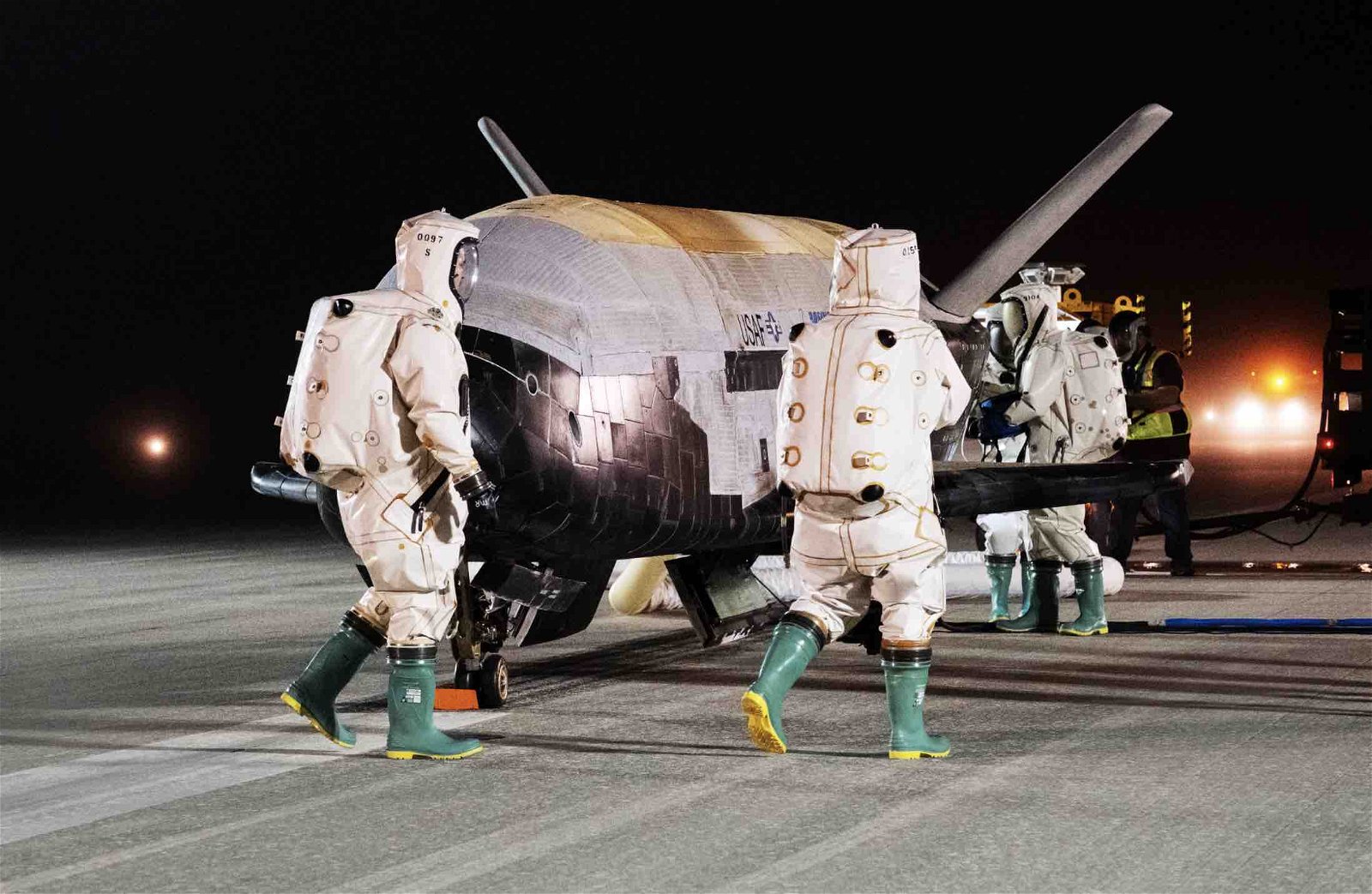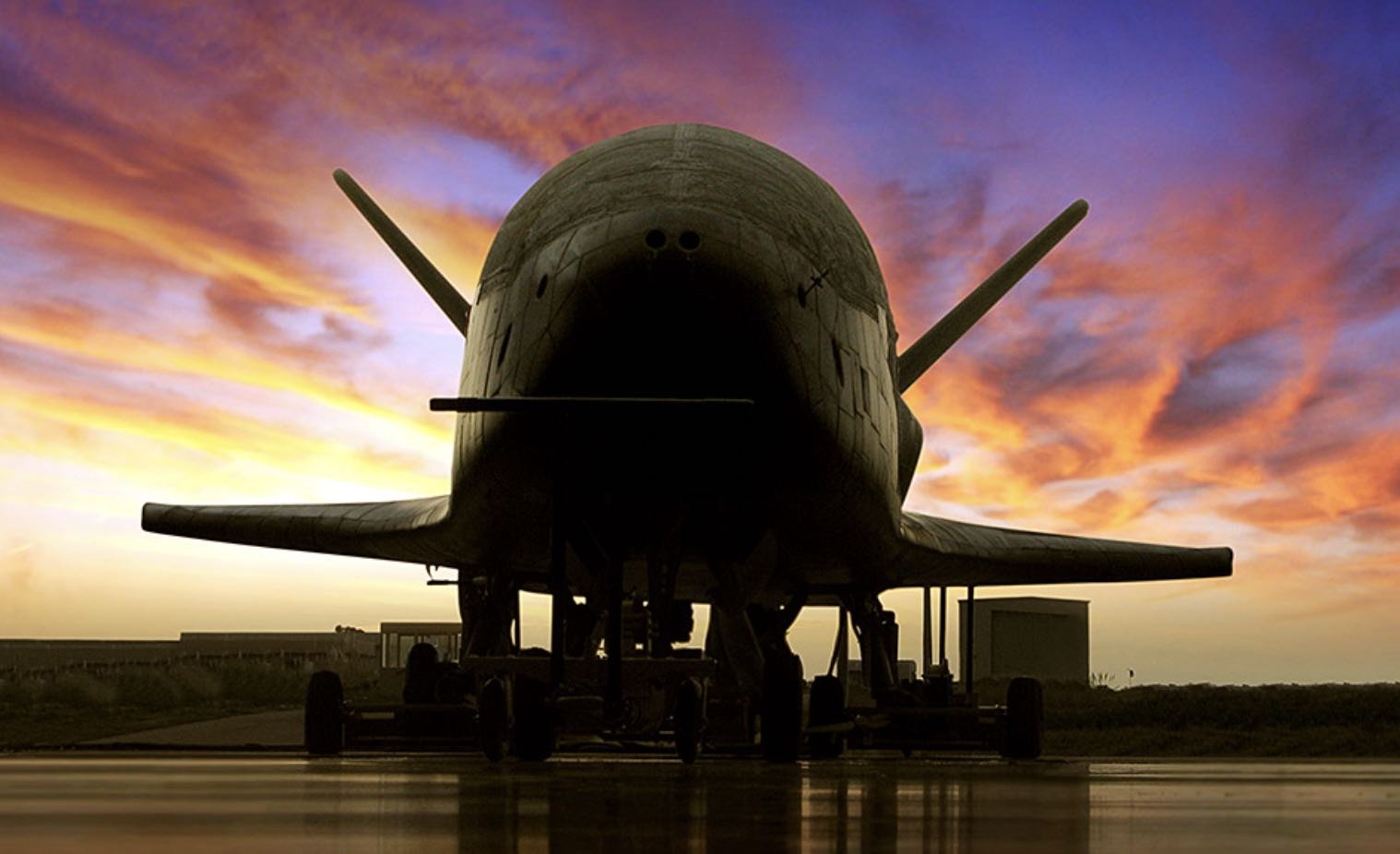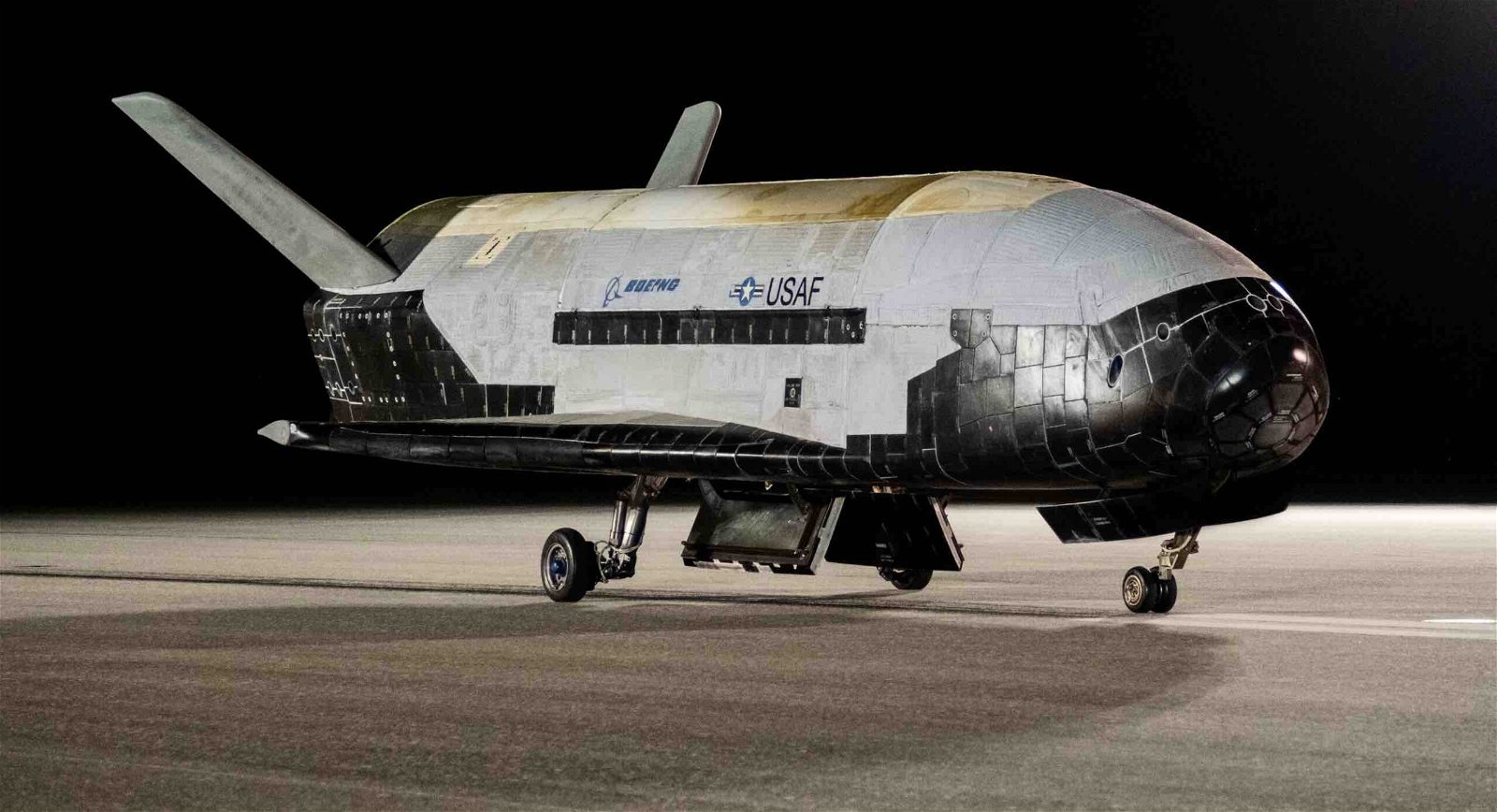Details about the seventh mission of the U.S. military’s mysterious X-37B Orbital Test Vehicle have been revealed, along with surprising news about the secretive spaceplane’s upcoming launch.
For the first time, X-37B Mission 7 (OTV-7) will see the robotic spaceplane launched on a SpaceX Falcon Heavy rocket, according to an announcement from The Department of the Air Force Rapid Capabilities Office and its partners at the U.S. Space Force.
The launch will occur on December 7, 2023, lifting off from Florida’s Kennedy Space Center.
While much is known about the X-37B and its past missions, several of the reusable robotic spaceplane’s operations remain mysterious. Carried into space aboard a rocket during its missions, the X-37B carries out orbital operations overseen by the Space Force, demonstrating reusable spaceflight technologies while facilitating a range of experiments and other operations for various agencies.
The spaceplane’s December launch, dubbed USSF-52, will include various experimental capabilities with several objectives.


X-37B Program Director Lt. Col. Joseph Fritschen said the tests will help to broaden the current capabilities of the reusable spaceplane and, with the help of SpaceX’s Falcon Heavy rocket, will be able to carry out “multiple cutting-edge experiments for the Department of the Air Force and its partners.”
“These tests include operating the reusable spaceplane in new orbital regimes, experimenting with future space domain awareness technologies, and investigating the radiation effects on materials provided by NASA,” the U.S. Space Force said in a statement on November 8.
One of the experiments, aptly named “Seeds-2,” will be carried out during OTV-7 as part of a NASA test that will expose seeds to the radiation conditions of long-duration spaceflight. In addition to helping scientists better understand how radiation impacts plant seeds, the experiment aims to support NASA’s objectives in the coming years to facilitate long-term crewed space missions.
The X-37B’s last mission saw the introduction of a new service module, which broadened the mysterious spaceplane’s capabilities and facilitated more experiments than its initial five missions.


X-37B Mission 6 (OTV-6) was the first to undertake a research experiment undertaken by the U.S. Naval Research Laboratory, called the Photovoltaic Radio-frequency Antenna Module experiment, which successfully displayed the capability of generating radio and microwaves through the collection of solar power.
Other experiments carried out during OTV-6 included tests similar to NASA’s upcoming “Seeds-2” experiment and the deployment of a small satellite called FalconSat-8 procured by the U.S. Air Force Academy and the Air Force Research Lab.
Fundamentally, the forthcoming OTV-7 mission will aim to perform similar tests with experimental technologies to help ensure space domain awareness during future missions.
“The X37B continues to equip the United States with the knowledge to enhance current and future space operations,” said Gen. B. Chance Saltzman, Chief of Space Operations, who said X-37B’s forthcoming mission will help showcase “the USSF’s commitment to innovation and defining the art-of-the-possible in the space domain.”
Micah Hanks is the Editor-in-Chief and Co-Founder of The Debrief. He can be reached by email at micah@thedebrief.org. Follow his work at micahhanks.com and on Twitter: @MicahHanks.

